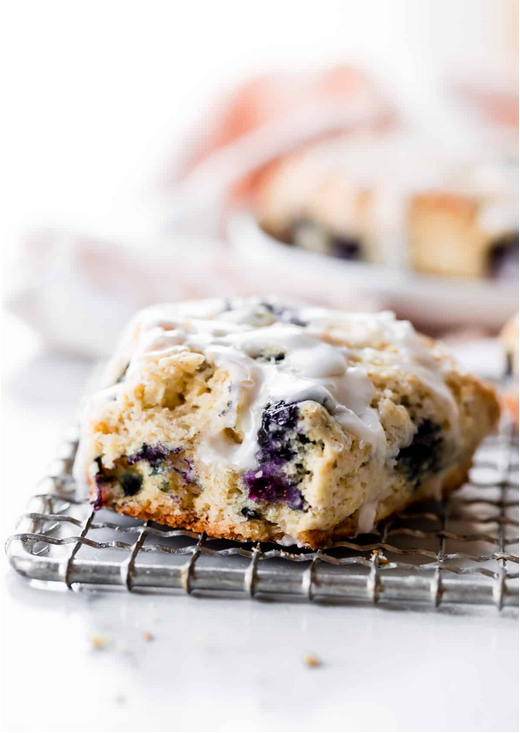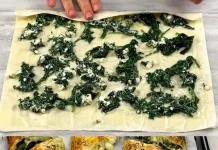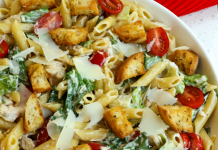Take a look at our scone recipe and make your own scones by adding various ingredients such as chocolate chips, berries, cheese, and herbs. The scones will be much more flavorful and moist than those made at a bakery. See the recipe for photos and instructions.
Scones can be sweet or savory and go great with coffee or tea. They are popular at baby showers, bridal showers, brunches, snack times, bake sales, Mother’s Day, and anywhere else muffins and coffee go together. (Always!) .
However, depending on the recipe and technique, scones can dry out and become sandpapery and taste like cardboard. Also, scones can spread too much and become boring to eat. But there is no such thing as boring in our scones. My basic scone recipe guarantees unique scones with crispy corners, fluffy centers, and lots of butter.
I have several scone recipes, but they all start with the same basic recipe. To make the best scones, check out the basics. There’s a lot to cover in this article, so sit back and wait.

What is a scone?
Depending on where you live, the word “scone” means different things. Scones in England are similar to American cookies, usually topped with butter, jam, and clotted cream. American scones are different, but different is not a bad thing. Today’s scones are sweeter, heavier, and contain more butter, so they are usually not topped with butter. Even though they are sweeter, there is room for a sprinkle of vanilla icing or confectioners’ sugar. By the way, this is my favorite traditional scone recipe.
The scones are basically quick to make because they are aerated with baking powder. Blueberry scones are my favorite, but I switch to pumpkin scones in the fall. (See my scone recipe).
No matter which flavor you choose, these scones are
- Moist and fluffy on the inside
- Crispy around the edges
- Buttery and flaky
- No sandpaper feel
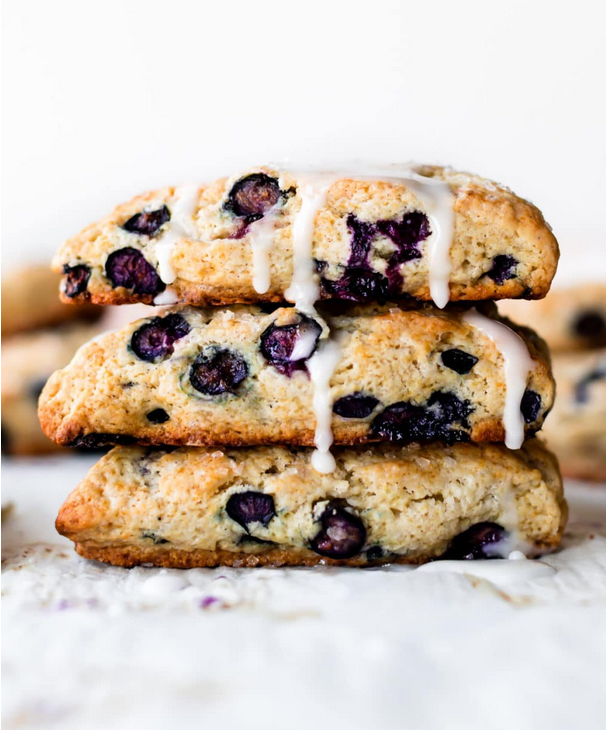
Basic scone recipe with only 7 ingredients
My main scone recipe has only 7-9 ingredients.
Flour: 2 cups of medium-strength flour is my standard amount, but I save a little more for my workbench and hands.
- Sugar: I used about 1/2 cup sugar for this scone batter. You can reduce it a bit, but be aware that doing so will change the flavor and texture of the scones a bit. If you want a saltier taste, reduce it to about 2 tablespoons. You can also use brown sugar. However, if you use brown sugar, be sure to beat it into the wet ingredients to avoid lumps. For example, see my caramel apple scones.
- Float baking powder.
- Salt. Adds flavor.
- Butter. Along with flour, butter is an essential ingredient in scones. It is flaky, flavorful, crisp around the edges, and bakes well.
- Heavy cream or buttermilk. For the most delicious pastries, stick to thicker liquids like heavy cream or buttermilk. I usually use heavy cream, but if I want a slightly tangy flavor, I use buttermilk. Thinner liquids can alter the flavor and appearance. You will end up with a one-way street of dry, tasteless, flat scones.
- Eggs. Great for enhancing flavor and building backbone.
- Optional. Vanilla extract adds the desired flavor to sweet scones, but omit it if you are making savory scones. Cinnamon is also recommended, depending on how good the flavor is.
And don’t forget the additives. Scroll down to see all my favorite scone flavors.

How to make scones by hand
Now that you know which ingredients are good, let’s make the scones.
- Mix the dry ingredients together. Use a large mixing bowl, as you want to have plenty of room for the mixing process.
- Add the grated frozen butter. You can use a pastry cutter or two forks like you would for a pie crust, or you can do it by hand. You can also use a food processor, but it tends to be too stiff for scone dough. To avoid overly dense scones, the dough should be moved as little as possible. It is just right that it crumbles into a mess.
- Mix wet ingredients.
- Mix the wet ingredients with the dry ingredients. Once mixed, pour onto the countertop.
- Shape into disks and cut into wedges. Wedges are easiest, but you can also make 10-12 teardrop scones, as in my banana scone recipe.
- Brush with whipped cream or buttermilk. For a golden brown finish, brush with whipped cream before baking. For a crunchier texture, sprinkle with coarse sugar.
- Chill in the refrigerator for at least 15 minutes. Keep the scone dough as cold as possible. To prevent overspreading, it is recommended to refrigerate the molded scones for at least 15 minutes before baking. In fact, refrigerating them overnight makes them convenient for breakfast in the morning!
- Bake until golden brown. Simply place the scones in a relatively hot oven and bake for 20-25 minutes.
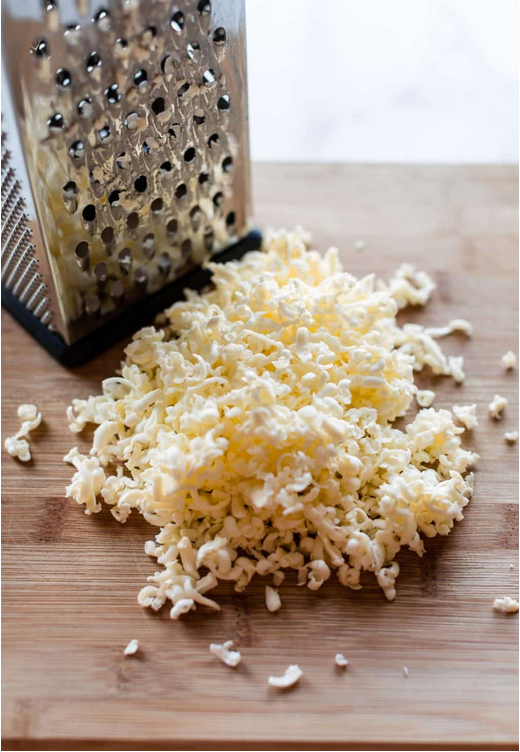
Cold ingredients and grated frozen butter
Scone dough should be kept as cold as possible to prevent over-stretching. If scones are overcooked in the oven, they lose their moist, thin crust texture. In other words, they become stale. Therefore, it is essential to use cold ingredients such as cream, eggs, and butter.
However, frozen crumbled butter is the key.
Just like in pie crust, the cold butter is rubbed into the dry ingredients to make the crumb. As the scones bake, the butter and flour melt, creating steam and air pockets. These air pockets make the center flaky and the edges crunchy. Refrigerated butter may melt in the dough, but frozen butter can be baked in the oven. Also, the finer the chilled butter, the harder the scones will spread and the faster the butter will mix into the dry ingredients. Remember not to overwork your scone dough.
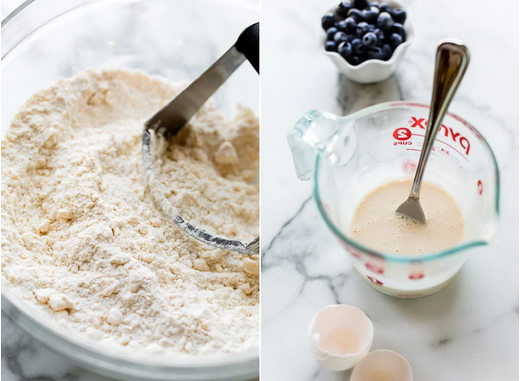
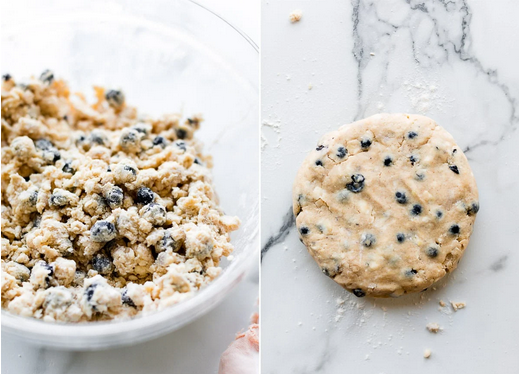
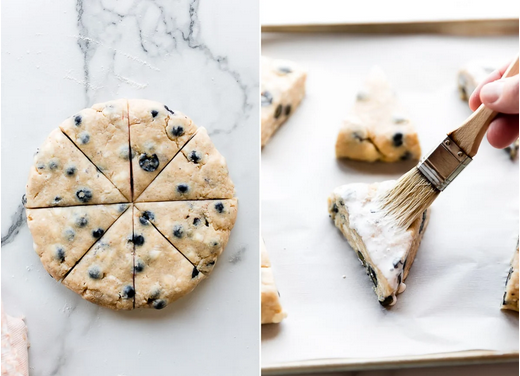
Three tips for making perfect scones
If you take anything away from this article, it is the following
- Fresh cream or buttermilk. Avoid using thin milk, as it will result in bland scones. Canned coconut milk is a good dairy-free alternative.
- Frozen grated butter. See above.
- Refrigerate before baking. Remember that chilled dough is not as useful. To prevent overbaking, it is recommended to refrigerate molded scones for at least 15 minutes before baking.

How to Freeze Scones
I used to be totally against freezing scone dough. Baking powder forms a base once wetted, so if you hold off on baking, the scones won’t rise as much in the oven. However, it only makes the baking process slightly worse, so don’t worry about it. In fact, scone dough can be formed into a comb shape and chilled overnight before baking.
- Chill before baking Place the scone dough on a plate or baking tray and freeze for one hour. Once relatively frozen, it can be stacked in freezer bags or containers. Bake while still frozen. Add a few minutes to baking time for the recipe below. Or thaw overnight and bake as directed.
- Bake and then freeze. Baked and cooled scones can be frozen before topping with icing or confectioners’ sugar. I usually freeze them in freezer bags or containers. To thaw, leave on the counter for a few hours or in the refrigerator overnight. Microwave for 30 seconds or heat in a 300°F (149°C) oven for 10 minutes while on a baking sheet.
How to prevent flat scones; see 2, 3 .

More than 15 scone flavors
- Blueberry and chocolate chip scones (both pictured).
- Cranberry orange and pumpkin scones
- Banana scones and lavender scones
- Raspberry and almond buttermilk scones
- Lemon and blueberry scones, sprinkle scones
- Caramelized Apple and Cinnamon Chip Scones
- Triple Chocolate Scones – tastes like a brownie!
- Strawberry Lemon Poppyseed Scones
- Ham and Cheese Scones
- Mixed Berries (pictured). Add fresh or frozen mixed berries according to the recipe below. Be careful not to add too many raspberries or blackberries, as they are prone to bursting.
- Cherry Chocolate Chips. Add 3/4 cup semi-sweet chocolate chips and 3/4 cup chopped fresh or frozen cherries according to recipe below.
- Fresh Herbs: reduce sugar to 2 tablespoons, add 2 cloves crushed garlic, 1/2 teaspoon black pepper, 1/2 cup chopped herbs such as rosemary, parsley, or basil, but not vanilla extract. Or, before or after baking, add 1 cup shredded cheese to the batter and sprinkle with sea salt.
continue reading…..

